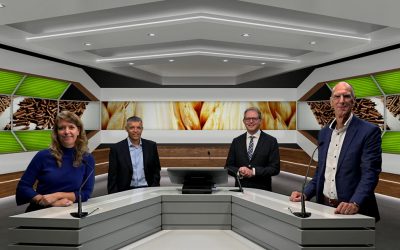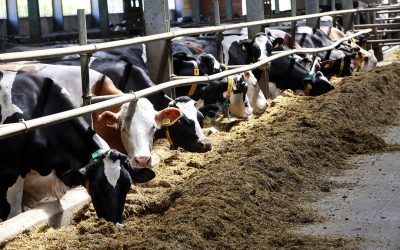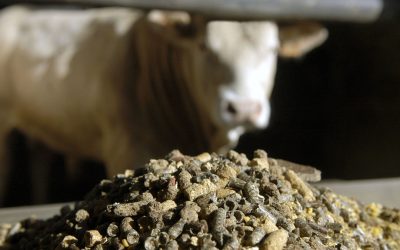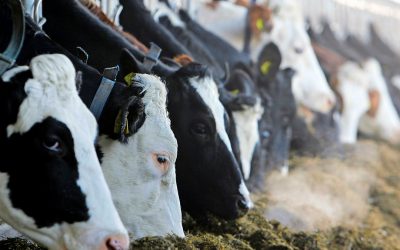Dutch report: environmental impact animal feed

A new report has been published by the Animal Sciences Group from Wageningen UR in the Netherlands. Researchers from Wageningen looked at the environmental effects of animal feed in the Netherlands by making a life cycle assessment.
Animal production chains contribute significantly to environmental pollution and greenhouse gas emissions. Environmental pressure is related to the animal production system itself, but also to the feed production. Cattle are mainly fed on fresh and conserved roughage. A minor part of the animal feed consists of concentrates. Pig and poultry production is completely based on the use of concentrates. Concentrates consists of by-products from the food industry and feed crops. Both contribute to the environmental pollution.
The research aimed to calculate the contribution of feed to environmental pressure and greenhouse gas emissions and to explore mitigation options. Statistical data from 1994 and 2004 have been collected. For the year 2007 additional data have been collected.
The following conclusions were drawn:
• In the Netherlands many by-products are used in concentrates. These relatively cheap ingredients can also be used elsewhere. The use for biofuels depends on the energy price, logistics and the availability of second generation technology for biofuels. In the short term no strong competition between the use for concentrates and for biofuels is expected.
• The ingredients market is very complex and has many internal dependencies. Affecting this market is difficult. Levies and quota systems can be used within the EU, but not on the markets outside the EU. The GMO policy of the EU indirectly affects the market, but does not have the goal to reduce the environmental pressure of feed use.
• There is a strong interaction between production and consumption of meat and milk products in the Netherlands and the European market. So, policy regarding this production and consumption and regarding the use of feedstuff is only useful at a European level.
• The reduction in environmental pressure of replacing feed ingredients for byproducts will be small, because already many byproducts are used. Every replacement implies changes in the amounts of other feed ingredients. These ingredients are not automatically available in large amounts and the effects on prices are not sure.
• Three quarters of the dairy cattle ration consists of roughage. Silage maize forms a third of the total amount of roughage. Most of the grassland in the Netherlands is not suitable for other crops and grass can only be utilized efficiently by ruminants like cattle and sheep. Furthermore, the amount of byproducts in cattle concentrates is higher than in concentrates for pigs and poultry. Concentrates for pigs and poultry have a larger share of ingredients that could also be suitable for human use.
• Utilization of byproducts from biorefinery in concentrates is still limited, unless materials in early stages of the cascade are used. Dried Distillers Grains and Solubles (DDGS) is a promising byproduct from biodiesel production. Its possibilities should be explored.
• The optimization of concentrates composition by the feed industry is currently based only on the price of the ingredients. Incorporating environmental pressure of ingredients in the optimization process might be a simple and small step ahead.
Related website:
The full report (in Dutch)











